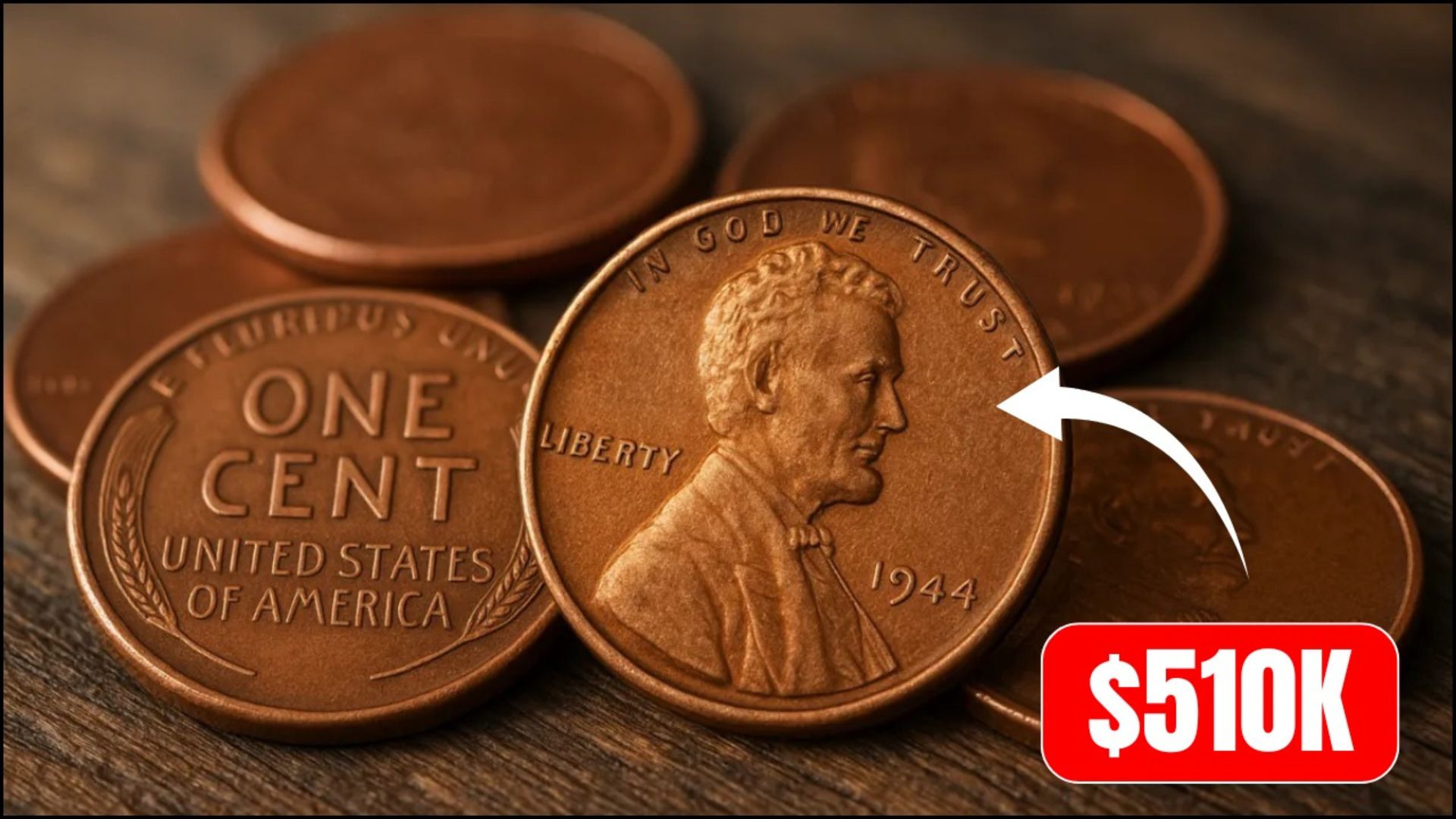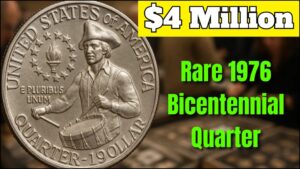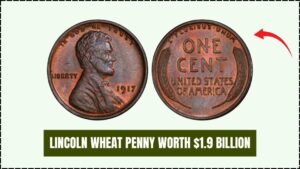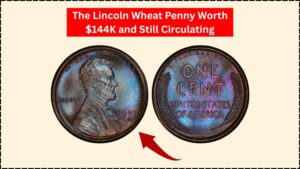Have you ever checked your loose change for a rare coin? A Lincoln Wheat Penny could be worth a fortune—up to $510,000! Some of these coins, still floating around in circulation, are highly valuable due to their rarity and historical significance. In this article, we’ll explain what makes these pennies so special, how to spot one, and why they’re worth so much. Let’s dive into the world of coin collecting and uncover the treasure that might be in your pocket!
What Is a Lincoln Wheat Penny?
The Lincoln Wheat Penny is a U.S. one-cent coin minted from 1909 to 1958. Designed by Victor David Brenner, it features President Abraham Lincoln’s portrait on the front (obverse) and two wheat stalks on the back (reverse), giving it the nickname “Wheat Penny.” While most of these pennies are worth just a cent, certain rare versions can fetch hundreds of thousands of dollars at auctions due to their unique features or minting errors.
Why Are Some Wheat Pennies So Valuable?
The value of a Lincoln Wheat Penny depends on several factors, including its year, mint mark, condition, and any minting errors. Rare pennies with specific traits are highly sought after by collectors, driving up their value. For example, a 1943 bronze Lincoln Wheat Penny sold for $510,000 because it was mistakenly made with bronze instead of the usual zinc-coated steel during World War II.
Key Features of a Valuable Lincoln Wheat Penny
To find a valuable Lincoln Wheat Penny, you need to know what to look for. Here are the key details that make certain pennies stand out:
1. Rare Years and Mint Marks
Certain years and mint marks (small letters indicating where the coin was made) are rarer than others. For instance:
- 1943 Bronze Penny: Most 1943 pennies were made of steel due to wartime copper shortages, but a few bronze versions were accidentally minted, making them extremely rare.
- 1909-S VDB: This penny, with the designer’s initials “VDB” and the “S” mint mark (for San Francisco), had a low mintage, making it highly valuable.
- 1955 Double Die: This penny has a noticeable doubling effect on the date and lettering due to a minting error, increasing its worth.
2. Minting Errors
Minting errors, like double strikes or wrong metal usage, can make a penny unique. The 1943 bronze penny is a prime example of a valuable error coin.
3. Condition
The condition of a coin, graded on a scale from Poor (P-1) to Perfect Mint State (MS-70), greatly affects its value. A well-preserved Lincoln Wheat Penny in “Mint State” condition can be worth much more than a worn-out one.
How to Spot a Valuable Lincoln Wheat Penny
You don’t need to be a coin expert to identify a potentially valuable Lincoln Wheat Penny. Here’s a simple guide to check your change:
- Check the Date: Look for key years like 1909, 1943, or 1955. A magnifying glass can help you see the date clearly.
- Look for Mint Marks: Check for a small “S” (San Francisco) or “D” (Denver) under the date. No mint mark means the coin was made in Philadelphia.
- Inspect for Errors: Look for unusual features, like doubled text or an odd color (e.g., a bronze 1943 penny instead of steel).
- Assess Condition: A shiny, uncirculated penny is more valuable than a scratched or worn one.
Most Valuable Lincoln Wheat Pennies
| Year | Mint Mark | Special Feature | Estimated Value |
|---|---|---|---|
| 1943 | None, D, S | Bronze (error coin) | Up to $510,000 |
| 1909 | S | VDB initials | $10,000–$100,000 |
| 1955 | None | Double Die error | $1,000–$50,000 |
| 1922 | No D | Missing “D” mint mark | $500–$15,000 |
| 1931 | S | Low mintage | $100–$10,000 |
Note: Values depend on the coin’s condition and market demand.
Where to Find a Lincoln Wheat Penny
You might already have a valuable Lincoln Wheat Penny in your possession! Here are some places to look:
- Loose Change: Check your pocket change, piggy banks, or old coin jars.
- Coin Rolls: Buy rolls of pennies from banks and search through them.
- Inherited Collections: Old family coin collections may contain hidden treasures.
- Flea Markets or Garage Sales: Sometimes, rare coins are sold unknowingly at low prices.
What to Do If You Find a Valuable Penny
If you think you’ve found a rare Lincoln Wheat Penny, follow these steps:
- Don’t Clean It: Cleaning a coin can reduce its value by damaging its surface.
- Get It Appraised: Take it to a professional coin dealer or grading service like PCGS or NGC.
- Store It Safely: Keep the coin in a protective holder to prevent damage.
- Consider Selling: Auction houses, coin shows, or online marketplaces like eBay are great places to sell valuable coins.
Where to Get Your Penny Appraised
- Professional Coin Grading Service (PCGS): A trusted organization for coin authentication and grading.
- Numismatic Guaranty Corporation (NGC): Another reputable grading service.
- Local Coin Dealers: Many coin shops offer free or low-cost appraisals.
- Coin Shows: Events where collectors and dealers gather to buy, sell, and appraise coins.
Why Collectors Love Lincoln Wheat Pennies
The Lincoln Wheat Penny holds a special place in the hearts of collectors. Its historical significance, unique design, and the thrill of finding a rare version make it a favorite. Plus, the possibility that a penny worth half a million dollars could be hiding in your change adds excitement to the hunt!
Tips for New Coin Collectors
- Start Small: Begin by collecting common Wheat Pennies to learn about them.
- Join a Community: Connect with other collectors through online forums or local coin clubs.
- Learn More: Read books or watch videos about coin collecting to improve your skills.
- Be Patient: Finding a rare Lincoln Wheat Penny takes time and persistence.
Final Thoughts: Start Your Treasure Hunt Today!
The Lincoln Wheat Penny is more than just pocket change—it could be a ticket to a small fortune. By knowing what to look for, you can turn a simple penny into a life-changing discovery. So, grab a magnifying glass, check your change, and start hunting for that rare Lincoln Wheat Penny worth $510,000. Who knows? Your next handful of coins could make you a collector’s dream come true!




